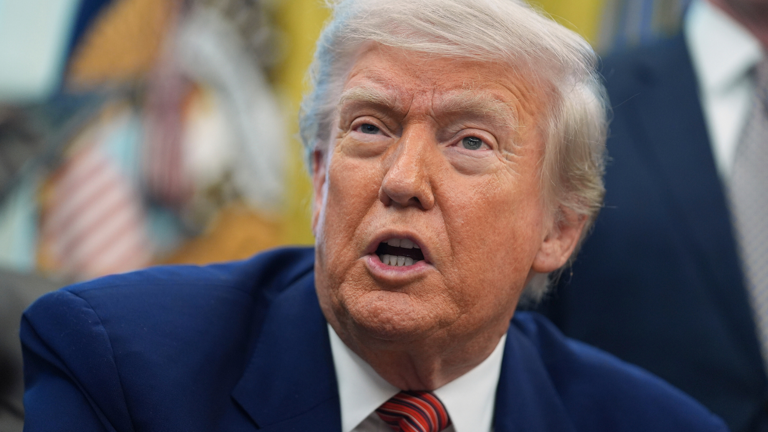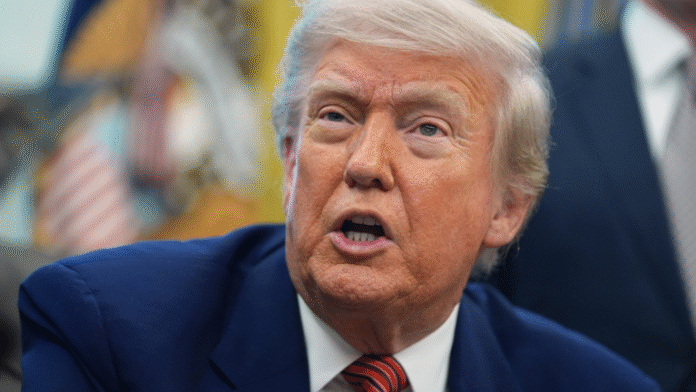President of the United States Donald Trump has again stated that the United States government had a central role in facilitating the 2025 ceasefire India-Pakistan through the use of trade negotiations. This statement has been received with skepticism and counterarguments from Indian policymakers, who lay credit to their own military campaign and diplomatic efforts as being responsible for de-escalation.

Trump Again Claims Credit for Brokering India-Pakistan Ceasefire via Trade Pressure
U.S. President Donald Trump repeated his claim on May 30, 2025, that his government played a key role in stopping the fighting between India and Pakistan earlier this year. Addressing a White House gathering, Trump asserted that he employed trade talks as leverage to pressure the two countries into a ceasefire agreement.
“We can’t deal with nations shooting missiles,” Trump said, reaffirming that economic motivations were at the forefront of his foreign policy. He hinted that by conveying an open sense that continued hostilities would interrupt commercial relations with America, both India and Pakistan had incentives to defuse tensions. (The Economic Times)
This isn’t the first time Trump boasted about relieving tensions between the two South Asian neighbors. He has done so in the past by pointing to his administration’s role in fostering talks and ushering peace to the region.
Indian Government’s Response
Indian authorities have categorically dismissed Trump’s assertion, stating that the ceasefire resulted from India’s own strategic moves. Indian Prime Minister Narendra Modi, in a recent speech, informed that Pakistan “begged for a ceasefire” during Operation Sindoor, a military operation initiated in retaliation to cross-border aggression. Modi pointed out that the operation continues and that India’s actions were decisive in forcing Pakistan into seeking de-escalation.
In addition to this, Indian Commerce Secretary Sunil Barthwal has told a Parliamentary panel that India has not made any promises to lower trade tariffs with the United States, refuting Trump’s claim that India had agreed to “cut tariffs way down.” Barthwal explained that though negotiations have been in place, no trade deal has been signed.
Divergent Narratives and International Reactions
The contrasting versions presented by the U.S. and Indian governments show the complexity of global diplomacy. While Trump attributes the success of peace under economic pressure, Indian authorities praise their military and diplomatic actions.
Globally, responses have been mixed. Pakistani Prime Minister Shehbaz Sharif confirmed that several nations, including the United States, had played a role in brokering the ceasefire. He declared a “Day of Gratitude” to mark what he termed a historical victory.
The United Nations and other countries, in turn, welcomed the ceasefire deal, hoping that it would usher in a lasting peace within the region.
Ongoing Challenges and Future Outlook
Despite the ceasefire agreement, tensions between India and Pakistan remain high. Both countries have accused each other of violating the ceasefire shortly after its implementation. Indian officials reported explosions and firing in Jammu and Kashmir, while Pakistani officials claimed Indian forces attacked Azad Kashmir.
These incidents highlight the impermanence of the ceasefire and the necessity for continued diplomatic efforts to settle deep-seated issues. The differing versions presented by the U.S. and Indian governments also complicate matters, possibly influencing future talks as well as regional stability.
These incidents highlight the impermanence of the ceasefire and the necessity for continued diplomatic efforts to settle deep-seated issues. This article is prepared based on information up to and including May 31, 2025 CUREENTLY
Note: This article is prepared based on information up to and including May 31, 2025. For more current developments, consult official government releases and credible news agencies.

